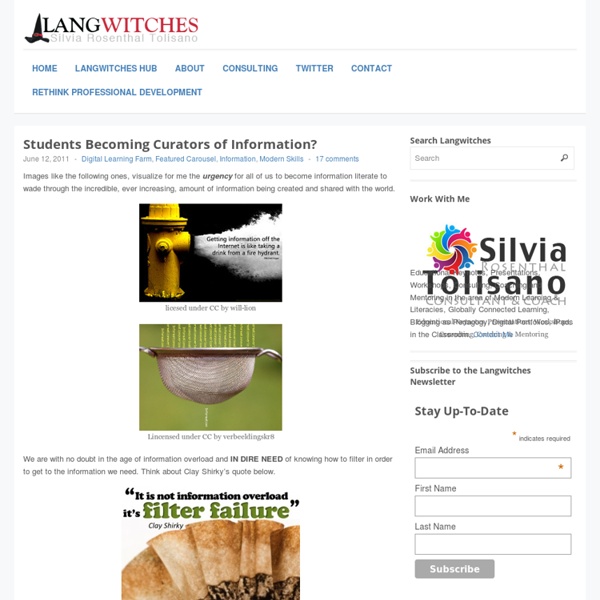Students Becoming Curators of Information?

Content Curation: Nine Things To Keep in Mind
Anyone who aims to drive a successful social media marketing effort will need to get comfortable with content curation. Content has become the glue that holds the whole social marketing process together. It is not enough to write and promote your own content. To establish expertise in your field, you need to read, understand, filter, and share good materials from other smart likeminded people or companies. This is the whole premise behind content curation. It is easy to get online, set up some social profiles, and start sharing to your heart’s content. Below are nine tips to keep in mind if you want to succeed at content curation. 1. Anyone who has worked with me on website and content strategy will tell you that I am a huge proponent of identifying buyer personas early in the process. There are many ways to figure out who your target audience is. If you have bigger budgets and more resources, you can go a few steps further by way of market research. 2. 3. 4. 5. 6. 7. 8. 9. Summary
Understanding Content Curation
July 7, 2012 Come to my session at ISTE 2016: “Personalize Learning With Student Curation” 6/28 4:00 – 5:00 CCC 113, Table 2 There are many buzzwords and phrases prevalent in education today. “21st Century Learning”, “Blended Learning”, “Personalized Learning”, “Flipped Classroom” – just to name a few. I manage a grant project in my district designed to assure students acquire “21st century skills” A current strategy for this is using backwards design, formative assessments of 21st century skills, and “blended-learning.” This curiosity led to further questions: Why curate? Collecting vs. I set out to read as much as possible of what others have written on the subject, (see my Scoop-It on Curating Learning Resources) to help with my understanding. Defining Curating in Education by Nancy White is licensed under a Creative Commons Attribution 4.0 International License. Thinking Level Process Organization Value Audience Students as Content Curators
Content Curation Primer
Photo by Stuck in Customs What is Content Curation? Content curation is the process of sorting through the vast amounts of content on the web and presenting it in a meaningful and organized way around a specific theme. The work involves sifting, sorting, arranging, and publishing information. A content curator cherry picks the best content that is important and relevant to share with their community. It isn’t unlike what a museum curator does to produce an exhibition: They identify the theme, they provide the context, they decide which paintings to hang on the wall, how they should be annotated, and how they should be displayed for the public. Content curation is not about collecting links or being an information pack rat, it is more about putting them into a context with organization, annotation, and presentation. People and organizations are now making and sharing media and content all over the social web. Content Curation Provides Value from the Inside Out Getting Started
Related:
Related:



